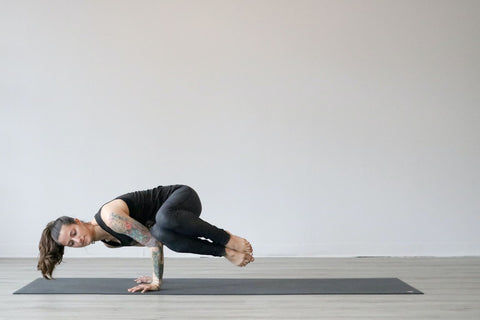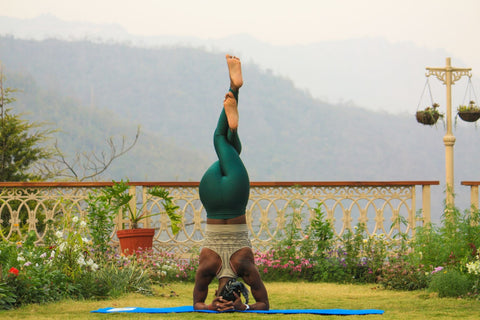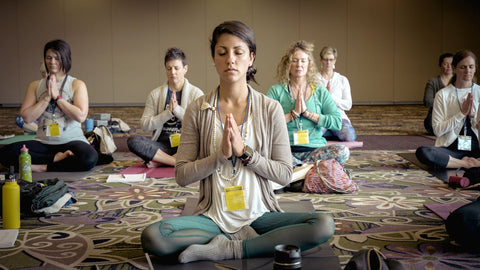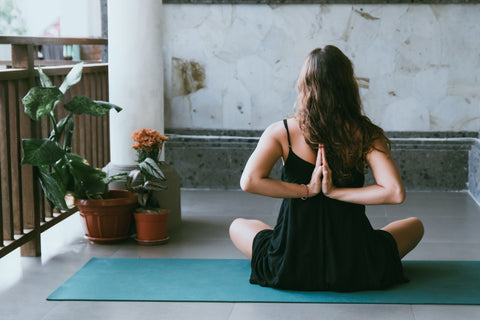Power your morning, energize your afternoon and ease into sleep with these three breathing techniques. Often, in our yoga classes we hear the word Pranayama and know that it means awareness of our breath. Pranayama by definition is breath control. Prana means our life force or the breath that carries us through life. Ayama means “to extend or draw out.” Together they mean breath control or extension.
Pranayama can be used throughout the day to jumpstart your mind, energize your body and to aid in drifting off to an easier sleep. This article will detail three different methods of Pranayama. Each has unique properties that make it effective for a certain time of day.
Morning Breathwork

Wake up with Nadi Shodhana (NAH-dee shoh-DAH-nah). A Nadi is an energy channel in the body. Shohdhana means purification. Nadi Shodhana is also known as alternate nostril breathing. It is best done on an empty stomach in the early hours of your day.
How to Nadi Shodhana:
- Sit comfortably and tall. Cross legged or place both feet on the ground if you are in a chair
- Take several long, full inhales and exhales to prepare
- Create Vishnu Mudra with your right hand – fold the index and middle finger down to the pad of the thumb. You will use the thumb on the right nostril and the ring and pinky finger on the left side
- Exhale through both nostrils
- Plug the right nostril and inhale through the left nostril
- Plug the left, exhale right; keep left nostril plugged and inhale right; Plug the right, exhale left; keep right nostril plugged and inhale left – one cycle
- Practice five cycles or three to five minutes to feel energized before your feet hit the floor in the morning
Afternoon Pranayama

The latter half of our day has been known to drag on. Use a specific type of Pranayama to reengage the mind and body to make it through whatever the afternoon sends our way. Lion’s Breath or Simhasana (SIM-as-ana) is often incorporated into our Asana practice but it can be done seated. Simha means Lion in Sanskrit. Lion’s Breath frees us from negative energy. It is very energizing, awakens the body and calms the mind. It can expel anger, frustration and stagnant energy.
How to Lion’s Breath:
- Remain seated as you are or find Sukhasana (an easy cross-legged position)
- Press palms against your knees and spread your fingers wide. Use the leverage of your palms against your knees
- Deep breath in through the nose and softly close the eyes
- All at once open your eyes and mouth. Stick out your tongue and exhale forcibly, make a sound as your exhale. It should be an audible sigh or roar
- Gaze can go up (like eyes rolling back in your head) or your drishti can go to the tip of your nose
- Repeat two to three times and if seated with legs crossed, change the cross of your legs and repeat with the opposite cross of your legs
Before Bedtime
Let Bhramari Pranayama (BRAH-mar-ri) or “Humming Bee Breath” help you relax in the evening before bed. This type of Pranayama can calm the mind, soothe nerves and relieve stress and anxiety. It prepares the body for sound sleep.

How to Bhramari Pranayama:
- Close the lips and separate the teeth. The tongue will press against the back of the upper teeth. This position stays the same with attention to softening the jaw
- Spread your fingers wide and plug your ears with your thumbs. Index fingers meet at the third eye. The rest of the fingers stretch across the eyes and rest against the bridge of the nose
- Inhale deeply through the nose, drop the chin (create the essence of Jalandhara Bandha) and exhale slowly with a low pitched humming sound. It should be smooth and steady. The light press of the tongue to the back of the teeth will aid in creating the sound
- Repeat seven times, straightening the neck with each inhale and lowering the chin with each exhale
- To progress in this Pranayama practice, add one cycle of Bhramari each week, working to 17 cycles per session
Let Pranayama guide you through your day beyond your time on your mat. It can be incorporated whenever you need extra guidance or time to regroup. Simply putting structure and awareness around your breath can help to clear your mind and find new energy to conquer the day or even drift off to a peaceful night’s sleep.
About the Author

Alexis is a YogaClub Tribe Leader who grew up in East Tennessee loving dance, especially Ballet. Her yoga journey began in 2009 with a very consistent Bikram practice and was later introduced to Vinyasa. She finished her 200 hour RYT in April 2015 and has been teaching ever since. Yoga has such a permanent and important place in her life. The aspects of yoga beyond the mat have been an incredible force in her life that has helped her through both good times and bad. Being in the studio and on her mat every day gives her the assurance that no matter what, everything is going to be alright.
Connect with Alexis on IG: @aahenslee






